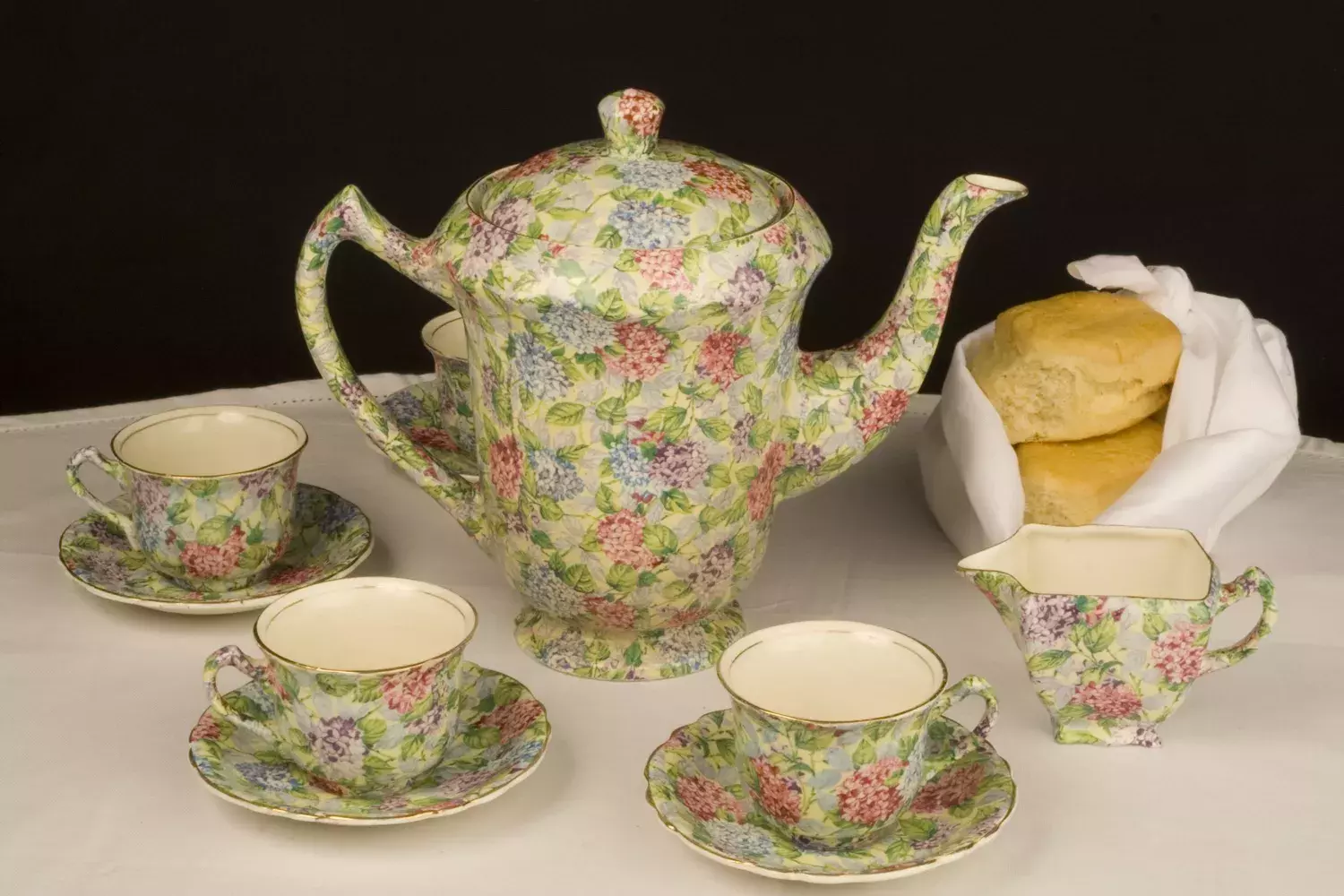Tea set and coffee set used by Curtin family
Tea was important to the Curtin family. Elsie customarily waited up and made a cup of tea for John when he returned from evening meetings. In a magazine article she wrote after the war, she recounted that Curtin had a cup of tea in his room at The Lodge before going to sleep on the night he died.
The presence of a coffee service in the collection is, then, perhaps unexpected. The fact that some pieces are missing from the Hydrangea service, however, suggests that it was used. Elsie Macleod remembered that her parents took coffee after dinner at The Lodge. She said she often visualised them with their coffee as they decided it was time to ring her back in Perth, just when she was usually preparing dinner. She laughed as she recollected the number of chops she had burnt while taking their telephone calls.
Coffee set: cups (4), saucers (5), cream jug (1), teapot with lid (2), 'Hydrangea', incomplete, bone china, James Kent Ltd, Longton, England
‘Hydrangea’ is an example of chintz china, that is, it has an all-over floral pattern. This china was made by many potteries but its popularity faded late in the 1940s as customers sought more ‘modern’ designs. ‘Hydrangea’ was made in Stoke-on-Trent, Staffordshire (England) by James Kent Ltd, which was founded in 1897. The company also applied this pattern to teapots. These are traditionally short and squat to allow tea leaves room to float above the spout, which is low. In contrast, coffee pots are tall with higher spouts to allow coffee grounds to settle beneath them if the coffee is made simply by pouring hot water over ground coffee beans.
Tea set: cups (4), saucers (5), plates (6), cream jug (1), 'GOLDEN DAWN', incomplete, bone china, Phoenix ware, made by 'T.F. & S. Ltd', England
‘Golden Dawn’ is an art deco design which was produced from 1925. It was made by Thomas Forester and Sons Ltd, which closed in 1959. Cups and the jug in this collection have straight, angular profiles and handles. The side plate has straight sides and is angled at its corners. The applied pattern also reflects art deco style.

Photo: National Trust of Western Australia

